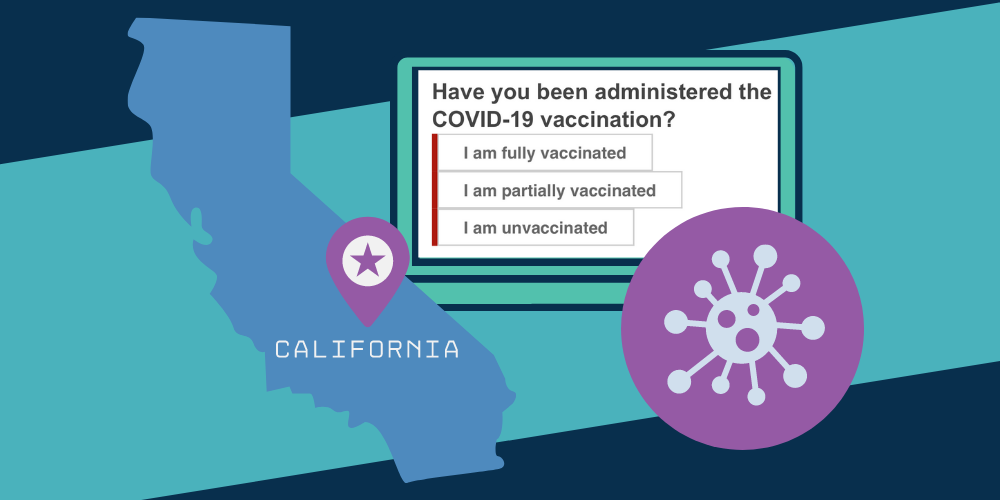
Employee offboarding is a process that leads to a formal separation between employee and employer. The offboarding process involves several activities, including deactivating access rights, returning equipment, collecting feedback through exit surveys, and transferring job responsibilities. Let's walk through how employee offboarding works and how HR automation can streamline the process.
When to start offboarding an employee
The offboarding process begins immediately after the employee tenders the letter of resignation for the job. A few common reasons for kickstarting the employee offboarding process are:
Voluntary resignation
Voluntary resignation takes place when an employee chooses to leave the organization voluntarily. Employees opt for voluntary resignation for various reasons, including a better offer from another organization, personal conflict with managers, health issues, and relocation.
Retirement
Retirement takes place when an employee permanently leaves the job as he/she attains the full retirement age. For instance, the full retirement age in the United States ranges between 66 years and two months and 67 years.
Furloughs and layoffs
A furlough is a temporary mandatory leave given to human resources in special situations such as an economic recession or a pandemic like COVID-19. A furloughed employee may be called back to work when the situation returns to normalcy.
Layoffs are a temporary or permanent termination of employment of a worker or a group of workers.
Involuntary termination
Involuntary termination refers to the dismissal of an employee from employment by the employer. A few reasons for involuntary termination may include poor performance, willful insubordination, fraud, and dishonesty.
Onboarding vs. offboarding
Onboarding and offboarding aren’t the same. Here is a table that identifies the differences between employee onboarding and offboarding:
Onboarding |
Offboarding |
|
1. Integrating new hires into the organization and its organizational culture. 2. Onboarding documentation. This may include enrolling the employee in payroll, benefits, and taxation. 3. An induction program enables the employee to understand administration must-haves, meet co-workers, and take an office tour. |
1. Making arrangements for the seamless withdrawal of employment. 2. Documentation for termination. This may include signing non-disclosure agreements, benefit transfers, and tax documents. 3. An exit interview enables the employer to collect feedback from the resigned employee. |
Most employers don’t give as much priority to offboarding as they give to the onboarding of employees. The below statistics showcase the importance of the formal offboarding process for organizations:
- According to Intermedia SMB Rogue Access Study, 89% of employees were able to access sensitive corporate applications after they completed offboarding formalities.
- 72% of CEOs, in a recent survey, admitted that they have taken important intellectual property (IP) details, ideas, and sensitive data with them from their former employer.
Moving forward into this article, we’ll explain more about why proper employee offboarding is important for the organization and provide a checklist that helps HR teams to improve the effectiveness of the offboarding process.
Why is proper employee offboarding important?
Organizations may need to implement a proper employee offboarding process to:
1. Meet compliance standards and regulation
Data leakages by former employees may result in compliance violations and attract huge penalties from regulatory bodies. For instance, the penalties imposed by the Health Insurance Portability and Accountability Act of 1996 (HIPAA) for data breaches can go up to $1.5 million per violation.
Automation helps the organization avoid costly data breaches and meet compliance standards by preventing email forwards and resetting passwords without any manual intervention.
2. Minimize legal and security risks
Around 50% of IT leaders, in a survey conducted by TechRepublic, said that the outgoing employee’s accounts remain active for longer than a day after they left the organization. This poses a huge security risk to the organization.
By automating the employee offboarding process with the help of HR Workflow Software, the HR team can deactivate the access rights to sensitive information immediately after the employee’s resignation is accepted.
3. Collect critical feedback for the department/organization
Employees are the best source of information for the organization. Since employees interact with various stakeholders, including co-workers, suppliers, customers, and creditors daily, they will be in a better position to provide honest feedback about both department and organization-wide operational practices.
An employee offboarding process, powered by automation software with a user-friendly interface, can collect and interpret the critical data from employees through:
- Detailed and well-thought-out template questions.
- Best-in-class analytics.
4. Part ways on the best terms
Former employees can make or break the employer brand. A poor offboarding process may spread negative word of mouth about the employment practices of an organization in the market. This negative word of mouth makes it difficult for the organization to attract qualified employees. Therefore, the organization should always try to part ways with employees on good terms.
By automating the offboarding process, the HR teams can streamline the activities such as getting the documentation signed and issuing the final paycheck on time.
The two major benefits of automation here are:
- Hassle-free offboarding experience to employees.
- On-time relieving of the employee.
5. Helps with future onboarding processes
Offboarding and onboarding go hand-in-hand. An ineffective offboarding may negatively impact the onboarding processes of the organization.
For example, if the knowledge transfer is not properly done during an employee offboarding, the organization may need to train the new employee separately by spending additional resources. Therefore, HR teams should focus on streamlining the offboarding if they want to improve the effectiveness of the onboarding processes.
A quick employee offboarding checklist for HR teams
Here is a nine-point checklist that helps HR teams to complete the employee offboarding process successfully:
- Notify all key stakeholders of the employee leaving
- Get all relevant paperwork and documentation signed and filed
- Plan an official knowledge transfer
- Issue final paycheck and update payroll
- Update your organization charts
- Recover all company assets and hardware
- Revoke or cancel systems access
- Conduct an exit interview
- Stay in touch!
1. Notify all key stakeholders of the employee leaving
Employees regularly interact with various stakeholders including co-workers, suppliers, and customers. When an employee leaves the job, the first thing the HR team should do is to notify all key stakeholders about this development through email, phone, or any other relevant means of communication.
This communication may include the following details:
- The last working day of the employee.
- Details of the person, who handles the work until a replacement is found.
- Details of the successor, if already a replacement has already been hired.
2. Get all relevant paperwork and documentation signed and filed
Documentation is a vital step in employee offboarding. The employee needs to sign a few documents and receive several forms from the HR team while leaving the organization.
- Get the non-disclosure agreement signed, if applicable. This agreement ensures the employee does not use the company’s sensitive information for his personal use or third-party’s benefit.
- Get the Change of Address form filled, if the employee is relocating. This ensures the employee receives his/her Form-W2 without any delay.
- Gain the employee’s written permission to release the employment records for future reference checks.
- Give out the letters related to the status of health insurance, retirement benefit, and other benefits the employee might have received from the company.
- Provide details about Consolidated Omnibus Budget Reconciliation Act (COBRA).
3. Plan an official knowledge transfer
Knowledge transfer is a process of transferring the skillsets, job knowledge, and behaviors from the relieving employee to the one who replaces him/her. An effective knowledge transfer, at the time of employee offboarding, may involve several steps, including, but not limited to:
- Explain the job responsibilities.
- Identify the outstanding tasks and give knowledge on how to address them.
- If possible, facilitate the work shadowing for a week (work shadowing is an on-job training wherein a new employee observes an expert performing the job).
- Use knowledge measurement tools to assess the success of knowledge transfer.
4. Issue final paycheck and update payroll
HR teams may follow the organizational policies while issuing the final paycheck to employees. If the organizational policy states that the employees receive their final paycheck on the last day, HR teams should stick to the same and make appropriate arrangements.
HR teams should consider the following aspects while issuing the final paycheck:
- Deduct the salary advance from the final paycheck.
- Add bonus, commissions, and reimbursements, if any, to the final paycheck.
- Add the money the employee had accrued through paid time off (PTO) to the final paycheck.
Once the final paycheck is issued, HR teams should remove the employee's name from the payroll. According to the Fair Labor Standards Act (FLSA), the organization may need to maintain the payroll records of employees for at least three years. The Internal Revenue Service (IRS) asks employers to maintain the records of employment taxes for at least four years.
5. Update your organization charts
An organizational chart represents the hierarchical structure of roles, responsibilities, and relationships within the entity. The organizational chart plays a vital role in seamless communication flow and internal reporting at the workplace.
Employee termination or resignation creates a void in the organizational chart and obstructs the information flow within the organization. Immediately after an employee departs from the organization, the HR team should update the organizational chart and ensure there is no disruption in the information flows and internal reporting.
In large-scale companies, HR teams may need to update the organizational charts both department and organization-wide.
6. Recover all company assets and hardware
HR departments need to recover all the company’s assets and hardware from the employees when offboarding them. The following are the assets the HR team may need to recover from employees:
- ID badges
- Computers, laptops, and chargers
- Hard drives and pen drives
- Drawing pads
- Phones
- Car or other vehicles
- Credit cards
Though it is a bit rude, the HR teams are advised not to give final clearance until the employee returns the company property that they may have in their possession.
7. Revoke or cancel systems access
Considering the increasing number of data breaches, revoking system access is a vital step in the offboarding process. While revoking the systems access, the HR team should focus on four aspects:
- Reset shared passwords
- Prevent email forwarding or sharing files.
- Revoke access to corporate applications.
- Create reliable backups.
8. Conduct an exit interview
An exit interview is the best way to collect honest feedback from the departing employee. It helps the HR team to identify areas of improvement in employment practices.
A few exit interview questions that can be asked to a departing employee are:
- Why do you choose to leave the job?
- Which aspects of our organizational culture you did not like?
- What could we have done to retain you?
- What did you like the best and least of the job?
- Were your accomplishments recognized throughout your employment?
The “check the box” type of feedback collection is ineffective. The HR manager should engage in face-to-face interaction with the exiting employee to gather feedback.
9. Stay in touch!
Never get disconnected from your former employees. Stay in touch with former employees, learn about their career progression, and offer compliments for their professional achievements even after they exit from the organization. HR teams can make use of social networks such as LinkedIn and Twitter to maintain a relationship with ex-employees.
Simplify and automate the employee offboarding process with BP Logix
There is no better way to simplify the employee offboarding process than by automating it. A proper offboarding process is important for the organization because it helps to meet compliance standards, minimize legal and security risks, collect critical feedback for the department/organization, and part ways with employees on the best terms.
HR team members may need to create a checklist for the employee offboarding and make sure each point in the checklist is marked before giving a formal send-off to the employee. An HR workflow software enables the organization to streamline the activities involved in the employee offboarding process and ensure employees are relieved on time.
Automate the employee offboarding process with the help of BP Logix HR Workflow Software. Request a demo to see how it can assist your organization.




